Potrebujeme váš súhlas na využitie jednotlivých dát, aby sa vám okrem iného mohli ukazovať informácie týkajúce sa vašich záujmov. Súhlas udelíte kliknutím na tlačidlo „OK“.
ASTM E1233/E1233M-14
Standard Test Method for Structural Performance of Exterior Windows, Doors, Skylights, and Curtain Walls by Cyclic Air Pressure Differential
Automaticky preložený názov:
Štandardná skúšobná metóda pre štrukturálne výkonu Vonkajšie okná, dvere, strešné okná, plášťové steny a cyklickou Tlak vzduchu diferenciálu
NORMA vydaná dňa 1.1.2014
Informácie o norme:
Označenie normy: ASTM E1233/E1233M-14
Poznámka: NEPLATNÁ
Dátum vydania normy: 1.1.2014
Kód tovaru: NS-40958
Počet strán: 10
Približná hmotnosť: 30 g (0.07 libier)
Krajina: Americká technická norma
Kategória: Technické normy ASTM
Kategórie - podobné normy:
Anotácia textu normy ASTM E1233/E1233M-14 :
Keywords:
curtain wall, deflection, deformation, distress, door, load, pressure chamber, specimen, support, window, ICS Number Code 91.060.50 (Doors and windows)
Doplňujúce informácie
| Significance and Use | ||||||||||||||
|
5.1 This test method is a standard procedure for determining structural performance under cyclic air pressure differential. This typically is intended to represent the long-term effects of repeated applications of wind load on exterior building surface elements or those loads that may be experienced during a hurricane or other extreme wind event. This test method is intended to be used for installations of window, curtain wall, and door assemblies for which the effects of cyclic or repeated loads may be significant factors in the in-service structural performance of the system and for which such effects cannot be determined by testing under a single application of uniform static air pressure. This test method is not intended to account for the effect of windborne debris. This test method is considered appropriate for testing unique constructions or for testing systems that have insufficient in-service records to establish their performance under cyclic loading. 5.1.1 The actual loading on building surfaces is quite complex, varying with wind direction, time, height above ground, building shape, terrain, surrounding structures, and other factors. The resistance of many window, curtain wall, and door assemblies to wind loading is also complex and depends on the complete history of load magnitude, duration, and repetition. These factors are discussed in ASCE/SEI 7 and in the literature (1-12)5. 5.2 This test method is not intended for use in evaluating the adequacy of glass for a particular application. When the structural performance of glass is to be evaluated, the procedure described in Standard Test Method E997 or E998 shall be used. 5.3 The proper use of this test method requires knowledge of the principles of pressure and deflection measurement. 5.4 Two types of cyclic air pressure differentials are defined: (Procedure A) Life cycle load (5.5 Typical practice in the United States for the design and testing of exterior windows, curtain walls, and doors has been to consider only a one-time application of design wind load, increased by an appropriate factor of safety. This design wind load is based on wind velocities with actual average probabilities of occurrence of once in the design life of the structure. The actual in-field performance of such assemblies, however, is dependent on many complex factors, and there exists significant classes of applications where the effects of repeated or cyclic wind loading will be the dominating factor in the actual structural performance, even though the magnitudes of such cyclic loads may be substantially lower than the peak load to which the assembly will be subjected during its design life. Examples of assemblies for which the effects of cyclic loading may be significant are included in Appendix X2. 5.5.1 When cyclic load effects are significant, the actual in-field performance of the assembly will depend on the complete load history to which the assembly is subjected. The history includes variable sustained loads as well as gusts, which occur at varying frequencies and durations. Such load histories are not deterministic, requiring the specifier to resort to a probabilistic approach for test parameters. The resistance of an assembly to cyclic loading is similarly complex. When available, endurance curves (stress/number (S/N) curves) can be used to estimate the fatigue resistance of a particular material. A major uncertainty in applying these data, however, is that the stress in an element induced by a unit pressure load is usually not known 5.5.2 To establish practical test parameters, the considerations in 5.1 – 5.5.1 must be modeled by a simple loading program that approximates the actual loading with respect to its damage potential. For the case of life cycle loads, the anticipated actual loading may include critical pressures that will occur with greater frequency during the design life of the structure than is practical to use for testing. In such cases, the actual load magnitude and number of repetitions must be represented in the test by an equivalent load of larger magnitude and fewer repetitions. For the case of specific wind event loads, the entire test loading program may be developed from wind tunnel testing or by using methods defined in the literature. 5.5.3 In this test method, the test assembly is first subjected to pressure cycles. The assembly is expected to survive this loading without apparent structural distress. Following this, the assembly is subjected to positive and negative maximum test loads. The maximum test loads may represent sustained loads or gust loads, or both. 5.6 Design wind velocities may be selected for particular geographic locations and probabilities of occurrence based on data from wind velocity maps such as provided in ASCE/SEI 7. 5.7 The person specifying the test must translate the anticipated wind velocities and durations into static air pressure differences and durations. Complexities of wind pressures as related to building design, wind intensity versus duration, frequency of occurrence, and other factors must be considered. Superimposed on sustained winds are gusting winds which, for short periods of time, from fractions of seconds to a few seconds, may move at considerably higher velocities than the sustained winds. Wind tunnel studies, computer simulations, and model analyses are helpful in determining the appropriate wind pressures for buildings by showing how a particular building acts under wind velocities established by others. (1-6)5. 5.8 Specification of a test program based on a comprehensive treatment of all of the above considerations is a complex task. The procedures presented in 5.9 Some materials have strength or deflection characteristics that are time dependent. Therefore, the duration of the applied test load may have a significant impact on the performance of materials used in the test specimen. The most common examples of materials with time-dependent response characteristics that are used in curtain walls are glass, plastics, and composites that employ plastics. For this reason, the strength of an assembly is tested for the actual time duration to which it would be exposed to a sustained or a gust load, or both, as discussed below. For practical purposes, cyclic load effects are to be considered to be duration-dependent, and the cyclic test loads need be applied only long enough for the chamber pressure to stabilize. In the past, practice in the United States generally has been to require a minimum test period for maximum test loads of 10 s for specified loads equal to 1.5 times the design pressure, unless otherwise specified. Thus a safety factor was incorporated in the testing. If the design wind load is determined through the analytical procedures of ASCE/SEI 7, the test load shall be based on the nominal loads derived from the load combinations used in allowable stress design. With higher test loads and longer time durations, the designer must also consider what safety factors are essential, particularly with regard to gust wind loads. Gust wind loads are of relatively short duration, so that care shall be exercised not to specify or allow unnecessarily long duration loads for purposes of testing the adequacy of the structure to withstand wind gusts. 1.1 This test method describes the
determination of the structural performance of exterior windows,
doors, skylights, and curtain walls under cyclic air pressure
differential, using a test chamber. This test method is applicable
to all curtain wall assemblies, including, but not limited to,
metal, glass, masonry, and stone components.2
1.2 This test method is intended only for evaluating the structural performance associated with the specified test specimen, and not the structural performance of adjacent construction. 1.3 Procedure A shall be used for life cycle test loads. 1.4 Procedure B shall be used for wind event test loads. 1.5 The values stated in either SI units or inch-pound units are to be regarded separately as standard. The values stated in each system may not be exact equivalents; therefore, each system shall be used independently of the other. Combining values from the two systems may result in non-conformance with the standard. 1.6 This standard does not purport to address all of the safety concerns, if any, associated with its use. It is the responsibility of the user of this standard to establish appropriate safety and health practices and determine the applicability of regulatory limitations prior to use. Specific hazard statements are given in Section 7. 1.7 The text of this test method references notes and footnotes that provide explanatory materials. These notes and footnotes (excluding those in tables and figures) shall not be considered as requirements of the standard. |
||||||||||||||
| 2. Referenced Documents | ||||||||||||||
|
Podobné normy:
Historická
1.10.2012
Historická
15.4.2014
Historická
1.2.2014
Historická
1.5.2014
Historická
1.5.2014
Historická
1.12.2011
Odporúčame:
Aktualizácia zákonov
Chcete mať istotu o platnosti využívaných predpisov?
Ponúkame Vám riešenie, aby ste mohli používať stále platné (aktuálne) legislatívne predpisy
Chcete vedieť viac informácií ? Pozrite sa na túto stránku.



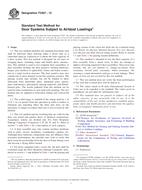 ASTM F2927-12
ASTM F2927-12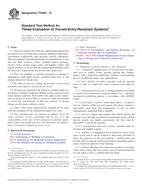 ASTM F3038-14
ASTM F3038-14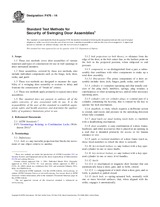 ASTM F476-14
ASTM F476-14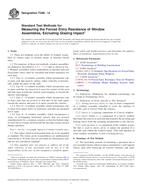 ASTM F588-14
ASTM F588-14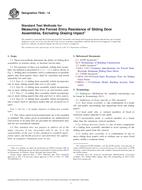 ASTM F842-14
ASTM F842-14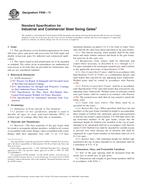 ASTM F900-11
ASTM F900-11
 Cookies
Cookies
